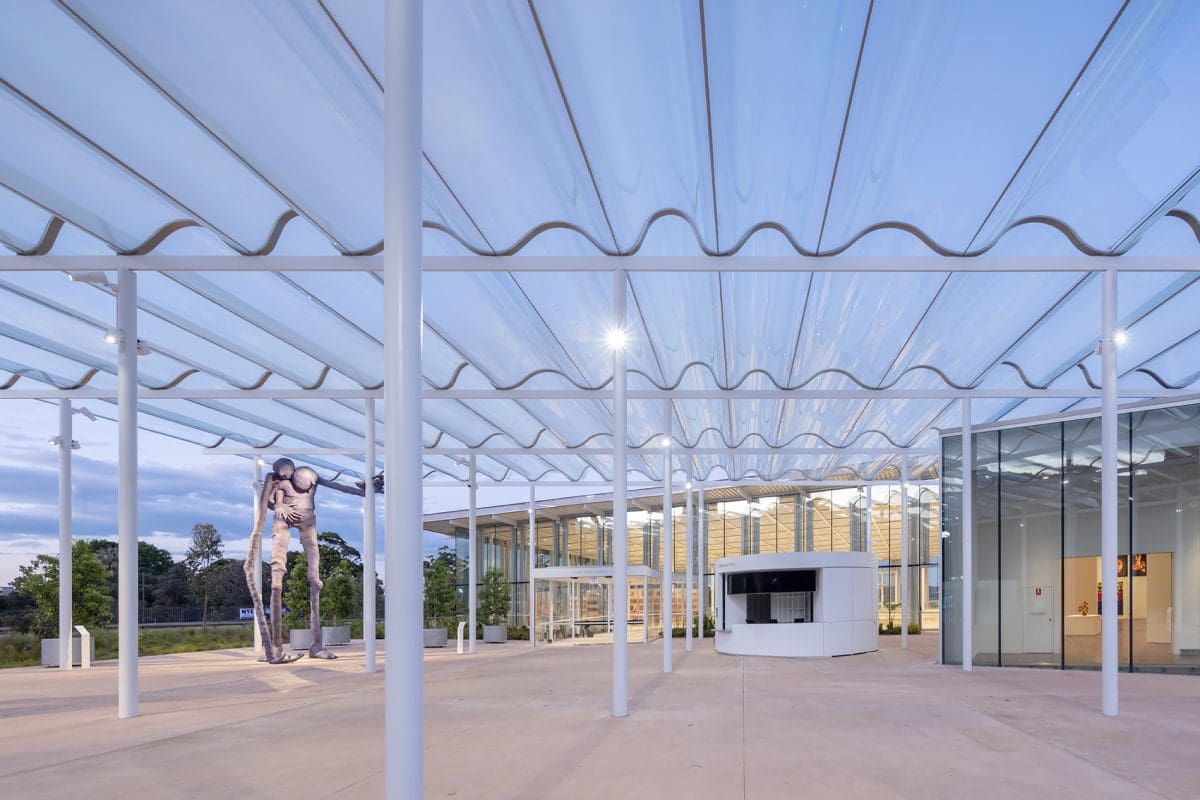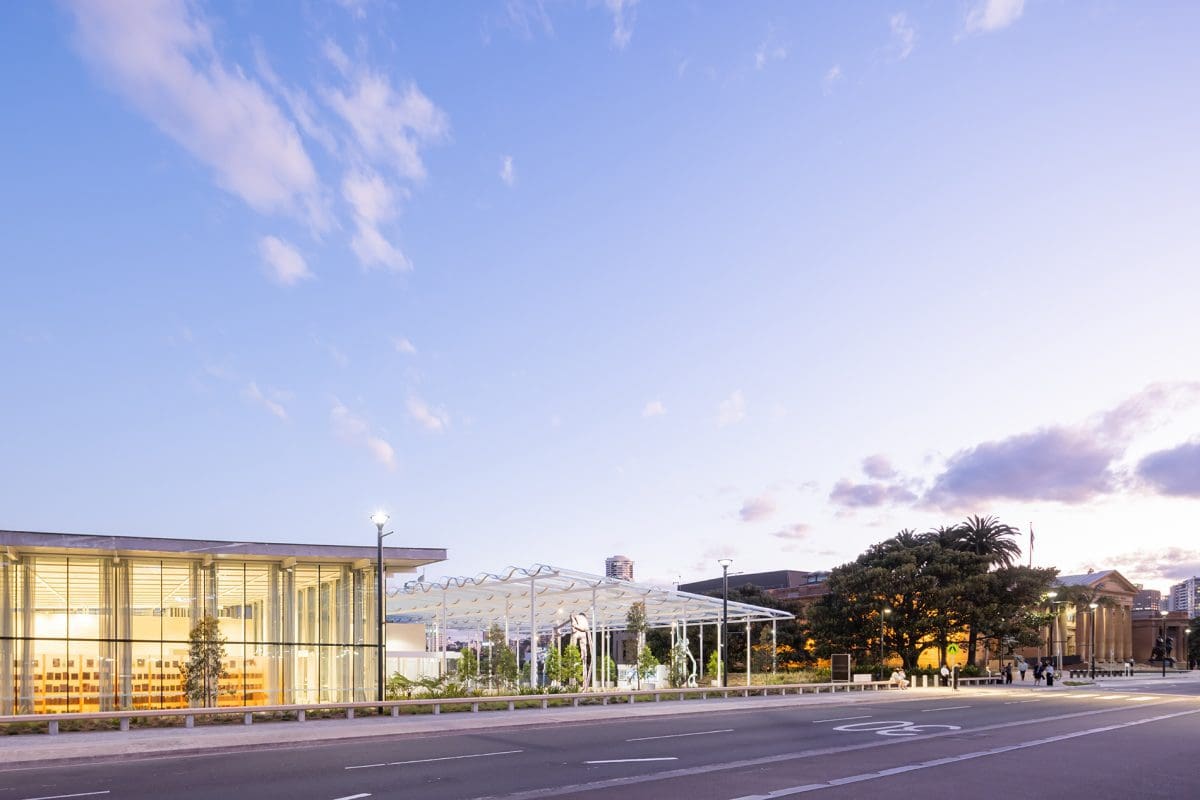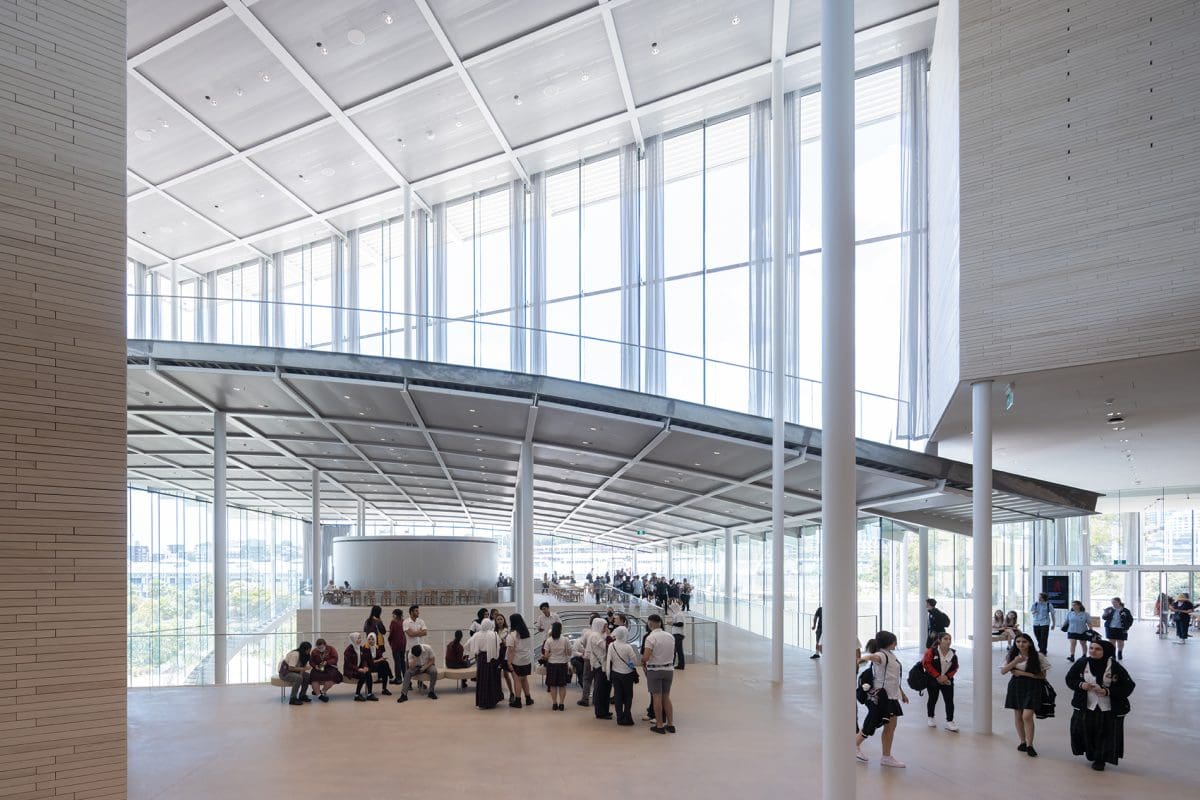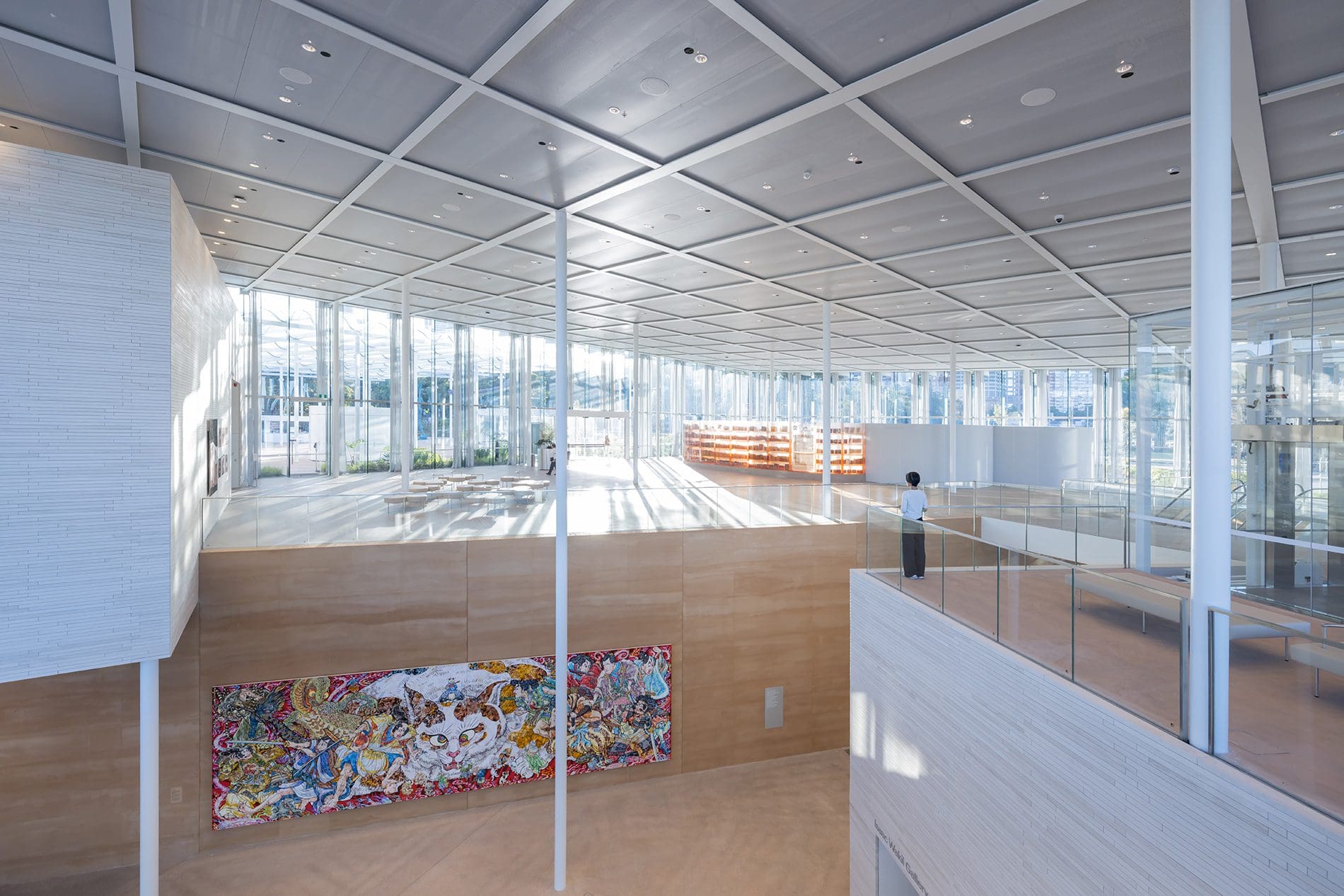
Finding New Spaces Together
‘Vádye Eshgh (The Valley of Love)’ is a collaboration between Second Generation Collective and Abdul-Rahman Abdullah weaving through themes of beauty, diversity and the rebuilding of identity.





The Art Gallery of New South Wales (AGNSW), with its distinctive 19th-century colonnaded façade, has undergone several renovations over the past half-century. Now, the doors are opening to Sydney Modern, where this historic building will sit among an expanded art museum campus filled with galleries, libraries and archives. But the centre point of the Sydney Modern project is a new adjacent building— it almost doubles the gallery’s total exhibition space, with original commissions from local artists to international creators. Like when the Queensland Art Gallery added the Gallery of Modern Art in 2006, this new $344 million dollar addition is set to change the Sydney landscape.
It started in 2008, when arts patron John Kaldor gifted AGNSW the Kaldor Collection—one of the most significant collections of late 20th-century art in Australia.
Director Michael Brand explains that Kaldor’s gift—where storage had to be transformed into exhibition spaces to house the major acquisition— was an early impetus to rethink the gallery’s spatial limitations. “It was clear that while the Art Gallery was in many ways punching above its weight, it was… half the size of the National Gallery in Canberra, the NGV [and] QAGOMA,” says Brand.
The road to Sydney Modern began with the commissioning of a master plan, unveiled in 2013, followed by an international architecture competition, with funding secured in 2017. The project is the largest government-philanthropic arts partnership realised in Australia, and the largest cultural investment in Sydney since the Opera House.
The indoor-outdoor connection implied by the term ‘campus’ is crucial to the visitor experience of Sydney Modern, designed by prize-winning architects SANAA. “Rather than coming to an institution, coming in the front door and experiencing art… it’s [now] art, architecture and landscape in a seamless relationship,” says Brand.
The new light-filled series of structures coexist with the surrounding landscape and historic building. A 125-metre-long curved wall of rammed earth connects the new galleries and provides interstitial spaces for artwork display. An art garden connects the old and new buildings, and an outdoor plaza highlights the museum’s role as public space, providing sightlines into the new building and its art. It’s an indoor-outdoor experience more reflective of Sydney’s nature than the existing building’s imposing façade.
The opening program features several firsts for the gallery, including a majority of work by women on exhibition and a gallery devoted to time-based art. The historic building now includes an expanded library, Australia’s first children’s art library, and the national art archive.
The long-contentious location of Indigenous gallery Yiribana—previously placed in the lowest level of the historic building—has been redressed. Yiribana is now the first gallery encountered by visitors on the ground floor of the new building. A deliberate elevation of First Nations voices continues throughout : major new works by Lorraine Connelly-Northey, Karla Dickens and Jonathan Jones are among nine significant artist commissions. Jones’s work bíal gwiyúŋo (the fire is not yet lighted) links the buildings and responds to the site’s history on Gadigal land.

In addition, Australian and international artist commissions are installed inside and outside both buildings. Deputy director and director of collections Maud Page explains that in viewing the existing collection as a chronology of time, taste and issues, “I was really interested with the nine commissions to see whether there was anything that we wanted to emphasise further… at this point in time. What do we signpost? What do we herald?”
Commissioned works by international artists Yayoi Kusama, Lee Mingwei, Lisa Reihana and Francis Upritchard explore myriad themes including place, exchange, spirituality and mythology, while Australian artists Simryn Gill and Richard Lewer respond to the local.
One particular highlight is the Tank, a 2,200-square-metre underground space repurposed from a decommissioned World War II naval oil tank. The inaugural artwork commission is Argentine-Peruvian artist Adrián Villar Rojas’s The End of Imagination, a sculptural experiment raised in a virtual setting then transformed into physical form. Villar Rojas has said that, “when I first visited in 2018 and climbed down a ladder into the Tank, I understood with all my senses the power and potential of this underground realm with all its layers of time, materials and history”. Page notes that as the gallery programs future exhibitions in the unusual venue, “it is through an artist’s vision that we will get the most out of this space”.
Sydney Modern’s first exhibitions will showcase its existing collection, allowing major and lesser-known works to circulate, and rethinking the collection itself in the process.
“When we reopen, every single space across the campus will have been reimagined,” Page explains. The existing AGNSW building includes new collection hangs, as well as monographic and temporary shows. In a break from traditional Australian art museum practice, 20th century Australian art is now positioned alongside international work of the same era. In the entrance hall, the Kaldor Public Art Project Sol LeWitt: Affinities and Resonances places the American artist’s wall drawing in conversation with paintings by Emily Kame Kngwarreye and Gloria Tamerre Petyarre.
Meanwhile, the thematic exhibitions in the new galleries combine works from the Indigenous, Asian, Australian and International collections. The shows include Making Worlds, exploring ideas of mapping, creation and the passing of time; Dreamhome: Stories of Art and Shelter, which reflects on diverse ideas of home; and Outlaw, celebrating pop culture antiheroes in the new-media gallery.
Ultimately, Sydney Modern’s opening harnesses 151 years of accumulated knowledge into a contemporary vision, connecting past and present.
Sydney Modern
(Sydney NSW)
Opens 3 December
This article was originally published in the November/December 2022 print edition of Art Guide Australia.